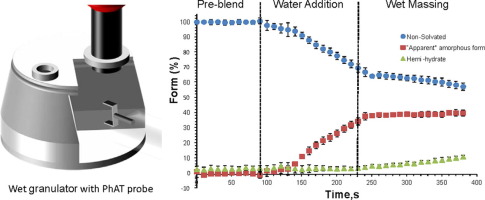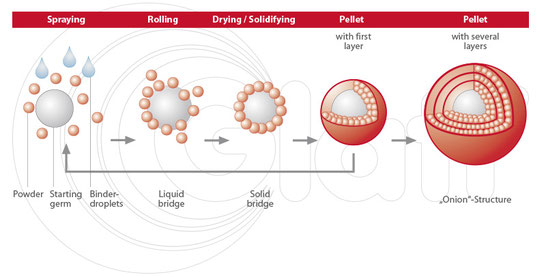- Home
- Blog
- News
- Basics
- Sources
- Agencies, Regulatory & Organisations
- CERSI Excipients Browser
- Excipient Report
- Excipient DMF List
- EXCiPACT Certified Companies
- Excipient Documentation
- Excipient EINECS Numbers
- Excipient E-Numbers
- FDA Inactive Ingredient List
- FDA GRAS Substances (SCOGS) Database
- IPEC Americas
- USP - U.S. Pharmacopeia
- Definitions
- Whitepapers / Publications
- Supplier
- Services
- Media
- Events
- 1st pharmaexcipients Poster Award
- Event Calendar
- Events featured by pharma-excipients
- 4th Annual Formulation & Drug Delivery Congress
- DDF Summit
- ExcipientFest Americas
- ExcipientFest Asia
- Global CompliancePanel
- International Conference and Exhibition on Pharmaceutics & Novel Drug Delivery Systems
- Formulation & Drug Delivery USA Congress
- Laboratory Medicine 2018
- Making Pharmaceuticals Europe
- Making Pharmaceuticals Exhibition
- Pharma Integrates
- PharmaExcipients China @CPhI China
- TTC Technology Training Center
- Jobs
- Online Sourcing
- Contact
04. September 2018
A decrease in the release rate over time is typically encountered when dealing with hydrophilic matrix systems for oral prolonged release due to progressive increase of the distance the drugmolecules have to cover to diffuse outwards and reduction of the area of the glassy matrix at the swelling front. In order to solve this issue, a novel formulation approach based on non-uniformdistribution of the active ingredient throughout the swellable polymer matrix was proposed and evaluated. Various...
25. April 2018
Parenteral sustained release systems for proteins which provide therapeutic levels over a longer period avoiding frequent administration, which preserve protein stability during manufacturing, storage and application and which are biodegradable and highly biocompatible in the body are intensively sought after. The aim of this study was to generate and study mannitol core microparticles loaded with a monoclonal antibody IgG1 and coated with lipid either hard fat or glyceryl stearate at different...
28. March 2018
Mini-tablets with diameters of 2.0, 2.5, and 3.0 mm are coated in two different lab-scale fluidized bed coaters equipped with a Wurster draft tube. The main focus of the research is to evaluate the inter-particle coating variability, and to assess the contribution of cycle time variation. Cycle times are measured using a photoluminescent tracer with a detector mounted on the top of the draft tube. The number of passes variability is represented from 5 to 28% of the total coating variability....
01. March 2018
Form changes during drug product processing can be a risk to the final product quality in terms of chemical stability and bioavailability. In this study, online Raman spectroscopy was used to monitor the form changes in real time during high shear wet granulation of Compound A, a highly soluble drug present at a high drug load in an extended release formulation. The effect of water content, temperature, wet massing time and drying technique on the degree of drug transformation were examined.
19. February 2018
The objective of this study was to assess the efficacy and the capability of a novel ethylcellulose-based dry-coating system to obtain prolonged and stable release profiles of caffeine-loaded pellets. Lauric and oleic acids at a suitable proportion were used to plasticize ethylcellulose. The effect of coating level, percentage of drug loading, inert core particle size, and composition of the coating formulation including the anti-sticking agent on the drug release profile were fully...
11. August 2017
The goal of this study was to test the feasibility to load non-ordered, non-spherical mesoporous silica with the model drug paracetamol, and subsequently coat the loaded particles using one single pilot scale fluid bed system equipped with a Wurster insert. Mesoporous silica particles (Davisil®) with a size ranging from 310 to 500 μm and an average pore diameter of 15 nm were loaded with paracetamol to 18.8% drug content. Subsequently, loaded cores were coated with ethylcellulose to obtain...
13. April 2017
Abstract Microwave resonance technology (MRT) is known as a process analytical technology (PAT) tool for moisture measurements in fluid-bed granulation. It offers a great potential for wet granulation processes even where the suitability of near-infrared (NIR) spectroscopy is limited, e.g. colored granules, large variations in bulk density. However, previous sensor systems operating around a single resonance frequency showed limitations above approx. 7.5% granule moisture. This paper describes...
31. March 2017
Abstract The objective of this work was to assess the effect of process parameters of a dosator nozzle machine on the powder bed uniformity of inhalation powders with various characteristics during a low-dose dosator capsule filling process. Three grades of lactose excipients were extensively characterized and filled into size 3 capsules using different dosing chamber lengths (2.5, 5mm), nozzle diameters (1.9, 3.4mm), powder bed heights (5, 10mm) and filling speeds (500, 3000capsules/h).The...
07. February 2017
Abstract Enteric-coated fixed-dose combinations of ezetimibe and lovastatin were prepared by fluid bed coating aiming to avoid the acidic conversion of lovastatin to its hydroxyacid derivative. In a two-step process, sucrose beads were layered with a glass solution of ezetimibe, lovastatin and Soluplus®, top-coated with an enteric layer. The impact of different bead size, enteric polymers (Eudragit L100® and Eudragit L100-55®) and coating time was investigated. Samples were evaluated by...
29. December 2016
Abstract A process to coat particles of active pharmaceutical ingredient (API) onto microcrystalline cellulose (MCC) excipient shows promise as a new way to dosage forms showing enhanced drug release. The process consists of a fluidized bed operated at elevated pressure in which API particles are precipitated from a Supercritical Anti-Solvent process (SAS). MCC particles were used as an excipient in the fluidized bed and collect the SAS-generated API particles. Naringin was selected as the...






